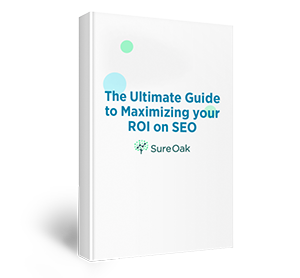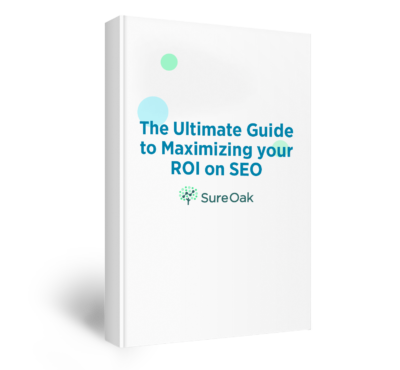Mastering marketing “Key Performance Indicators” (KPIs) is difficult, especially for SaaS companies. While absolutely necessary, marketing KPIs for SaaS are not as simple as they may first appear. Here are the two main reasons why:
- The results of digital marketing strategies are often slow and not so easy to see. Digital marketing can be a long game, with the average results taking between 6 and 12 months to materialize. As a result, what you reap today may only be sown quite a lot further down the line. Like continental drift, the formation of diamonds, or that arduous gym workout that you are one sweat drop away from giving up on, your marketing strategy can take some time to appreciate.
- A large proportion of SaaS companies base their offering on a subscription model. Trustworthy KPIs must reflect this. Because retention is a vital component of customer success in the world of B2B SaaS marketing metrics, easy one-to-one correlations are hard to come by, so you need to track and measure a few key metrics to ensure that you are properly evaluating your digital marketing efforts.
The process of tracking SaaS marketing metrics has to be streamlined, targeted and consistent to provide you with effective information. It’s also non-negotiable if you want to ensure that your marketing spend is correctly allocated. This guide will provide you with the most important SaaS marketing metrics you need to analyze.

What Differentiates Marketing KPIs for SaaS Companies?
While most businesses marketing KPIs are focused on moving leads down the sales funnel from attention to interest, to desire, to purchase. The SaaS funnel extends beyond that to onboarding, retaining, and expanding.
The subscription model of SaaS companies dictates that client retention is just as important as client acquisition.
The question is not as simple as: Are my marketing efforts leading to my clients buying my products?
Rather, it’s: Are my clients continuing to buy my service every month and, as a result, justifying my business model?
For example:
Your company sells HR software to small businesses on a subscription model.
- You entice your clients through your impossible-to-resist leads.
- You wine-and-dine them through your well-conceived nurturing sequence.
- You seal the deal with your stellar team’s inimitable magic.
- You get them to sign up for a subscription.
Your marketing machine is working perfectly, right? Not necessarily.
Your business model does not survive on a company signing up for one month. It survives on a company signing up for the long-term. Your SaaS marketing metrics must reflect that.
So, while you will be tracking some of the same metrics as other companies, your B2B SaaS marketing metrics must reflect the specific nature of your industry. The following sections explore each of the KPIs for SaaS that you simply have to track.

The 9 SaaS Marketing Metrics and KPIs You Must Track
The overall goal of your SaaS marketing metrics is to help you define what campaigns are working best and which need to be pivoted and adapted to ensure you are marketing efficiently and effectively.
1. Leads and Lead Lifecycle
Leads are the metric that answers the question, Who pays attention to our site? There are varying degrees of interest that can very loosely be divided into these categories:
- Who knows.
- Who cares.
- Who cares a lot.
In the first category, you have New Leads. They’ve found out about your company, and your company has found out about them. They’re at the tip-top of your funnel. Ideally, you’ll nudge them through—but before you do, it’s important to understand how many of them there are, who they are and where they came from.
Google Analytics is a widely used and free tool that can help you better understand who is knocking at your door. Be aware, however, that they altered their calculation methods in 2017. So ensure that the data you’re using is what you think it is.
Then, there are leads who care. And leads who care a lot.
Leads who care: aka Marketing Qualified Leads (MQL). They’re ready to window-shop at least, and they find themselves hovering a little further down your funnel. An example of an MQL? They’ve popped around more than once. They may have even downloaded your content. You may have even had a conversation. So things are looking mighty possible—and the more info you have on them, the more power you have to refine your nurturing sequence.
Another metric that is worthy of honorable mention within “leads who care” is SaaS contacts or subscribers. Contacts are the leads that follow you. They can be considered MQLs and have either signed up for an informational subscription or follow your site, new content, social feed, or video channel.
And then there are:
Leads who care a lot: aka Sales Qualified Leads (SQL), an MQL that you have been in touch with to provide more information, and Sales Qualified Leads (SQL) leads that are in the decision-making process with the sales team. These leads are ready to get a little more serious. They know what you’re about and, if you’re doing your job, you know all about them too. To sum it up, they want what you’re selling—and you’re more than happy to sell it to them.
2. Unique Visitors
Tracking your unique visitors means finding out how many sightseers popped by your site in a specific period. For example, if the same IP address came by twice (or three or a hundred) times in that period, they will only be regarded once.
This information is vital to you because it helps you understand your lead generation strategy’s efficacy and allows you to see which of your marketing channels are working best for you.
Is it paid search? Organic search? Social media? A combination? Get to know where your visitors are coming from with Google Analytics, and then amplify and focus on the channels that work most effectively.
Lead-to-Customer Rate
Visitors are great. Leads are greater. But how much does any of it matter if those leads are not transforming into paying clients? The simplest way to calculate your conversion rate is to divide your total number of converted customers by the number of leads and then multiply this by 100 to get a percentage.
If your conversion rate is very low, you know that something is amiss—and that the problem likely exists lower down in your funnel. After all, those leads do exist. It’s the conversions that aren’t happening. Once you understand where your leads are going amiss, you can make changes to your strategy that take this new intel into account.
Customer Churn Rate
Customer churn rate focuses on customer retention and loss. Analyzing your churn rate can help a business predict if their product is Product Market Fit (PMF); a product that is valuable and likely to continue engaging a customer enough to make them stay with their subscription beyond their original commitment.
Regarding marketing KPIs for SaaS companies, churn rate is one of the most important metrics to understand and has to be analyzed in conjunction with customer conversion. Remember, for SaaS, retention is as important as acquisition.
Your churn rate is the frequency with which customers cancel or simply don’t renew their subscriptions. The simplest method of calculation is as follows:
- Define a period
- Calculate the number of customers lost in the period
- Divided it by the number of customers acquired in the period
- Multiply by 100%
Luckily, you don’t have to sit and do this manually. Instead, one option is to tap into HubSpot’s Metrics Calculator.
- An average churn rate is 5%.
- A pleasing churn rate is 3%.
- A stupendous churn rate is a negative one, meaning that the amount of customers you have gained makes up for any customers you have lost.
5. Customer Acquisition Cost (CAC)
Customer acquisition cost (CAC)is the total cost it took for marketing and sales to acquire a customer. So, what is the cost of acquiring your average client? This is a difficult one to answer as the top and bottom ends of this graph may be quite far apart from one another—and heavily dependent on the industry.
The simplest way to calculate CAC is to divide your total sales and marketing budget by the number of customers you have acquired. This will bring you close to how much it costs to acquire the average one. Then, the goal is to reduce this cost as your business grows, meaning more customers and less spend.
So what does CAC look like for a SaaS company?
While there is no one-size-fits-all approach due to the variance in different subscription models, it’s important to look at your whole sales cycle from start to finish. The question to ask is: how much are you putting in to acquire and retain a customer—and if it’s not worth it, perhaps it’s time to re-strategize.
6. Customer Life Value (CLV)
This metric is all about potential—and is one of your most important marketing KPIs for SaaS. The customer lifetime value (CLV) shows a customer’s projected to spend in your company over their lifetime — how often a customer makes a purchase and the amount a customer spends. You may have also heard the CLV referred to as the Lifetime Value or LTV.
To calculate and track CLV as a metric:
- Calculate your customer lifetime rate (CLR) by dividing the number one by your churn rate.
- Find the average revenue per account (ARPA) and divide total revenue by the total number of customers.
- Multiply the CLR by the ARPA to get the CLV.
7. CLV:CAC
CLV informs how much a company might earn over the lifetime of a customer. CAC calculates the cost of acquiring customers. Dividing CLV by CAC to get a ratio provides a clear indication of if the cost of your strategy is worth the gain of a customer over time.
The formula is simple:
CLV ÷ CAC = (#) CLV to (1) CAC
It might look like this:
- CLV= $3,000.
- CAC= $1,000.
- CLV:CAC = 3:1
When it comes to SaaS marketing metrics, this is perhaps the gold standard. What it comes down to is this crucial question:
Can you justify the amount you are spending acquiring customers with how much they will bring you over the span of their engagement with you? If not, it’s time to reassess your global marketing strategy. Your company is considered in good shape if you come out with a CLV: CAC of 3:1.
8. Conversions and Monthly Recurring Revenue (MRR)
- Conversions should be analyzed as deeply as possible. Common methods of analyzing conversion include:
- How many unique visitors have turned into leads and transitioned deeper into the funnel.
- How many MQLs have transitioned to SQL to gain more information about the company and have contacted a representative.
- How many leads successfully transitioned to a customer. This insight calculates how effective your strategy is at capturing lead opportunities and converting them into sales.
Analyzing conversions in this way allows a business to pinpoint where their strategy is working effectively and where it might not be.
In addition to analyzing what conversion opportunities are captured and where conversion occurred along the marketing funnel, monthly recurring revenue should be monitored to create a baseline of revenue. Understanding what types of conversions are happening, as well as how much your company bills monthly, can provide insight into how successful your marketing efforts and campaigns are.
9. Cost-to-Service (CTS)
Cost-to-service (CTS) is the ultimate end-goal metric. CTS differs from CAC in that CAC calculates what it takes to acquire a customer, but calculating CTS includes every step of the customer’s journey and providing the service. This includes:
- Onboarding.
- Customer service and support.
- Infrastructure and managing the actual product.
- Customer retention costs such as loyalty programs, incentives, promotions, etc.
Understanding the CTS is essential to recognizing how profitable a business is. By using all of the metrics listed above and weighing them against your CTS, you can continue to hone in on, strategize for, and pursue the customers that make the most impact for your bottom line.

How to Boost Your B2B SaaS Marketing Metrics
Ultimately, SaaS marketing metrics should be used to help you pinpoint where you need to focus your efforts and energy in your SaaS marketing campaign. If you want to boost your B2B marketing metrics, you will need to create a holistic marketing plan that includes SEO. After all, what good does your business do if no customers can find you or think your site or content is worthy of paying attention to.
SaaS marketing metrics calculate where your customers come from, how they move along the funnel and how profitable they are to your business. SEO gets them in the door in the first place.
SEO for B2B companies increases your visibility like no other digital marketing channel. In fact, organic search drives 51% of search traffic to B2B and B2C websites and, in turn, yields long-term sustainable growth. To improve your marketing KPIs for SaaS, it follows that an effective, well-executed SEO strategy is non-negotiable.To boost marketing KPIs for SaaS companies, utilize SEO to:
- Improve your SERP ranking. Easier said than done, we know. SEO can be a complex beast. It’s not easy getting your site to rank on top. However, it’s simply not something you can ignore. Marketing without an effective SEO strategy is like trying to fish without bait—while you may be lucky on the odd occasion, you’re certainly not doing yourself any favors.
- Embrace a digital marketing strategy that looks at the long-term. Because SaaS marketing metrics must take into account the longevity of a customer journey, to boost said metrics, it’s imperative that you look to the long-term. Steer clear of digital marketing companies that offer you quick-fix solutions. Chances are if they do give you quick results, those results will be short-lived.
Marketing KPIs for SaaS Success: Final Thoughts
The average number of SaaS apps used by organizations has grown from 8 to 16 between 2015 and 2018. In an industry that is set to be worth $380 million in the year 2021, trying to find your place in it is worth the effort—but, in order to make intelligent decisions for your future, you need appropriate and efficient ways to track your current degree of success.
The longer-game of digital marketing may feel as though it lacks fireworks when you start out. Persistence, effective tracking with SaaS marketing metrics and KPIs, and appropriate implementation with what you have learned from your metrics go a long way to ensure that what you put into your marketing budget, you get out—and hopefully with remarkable interest.


